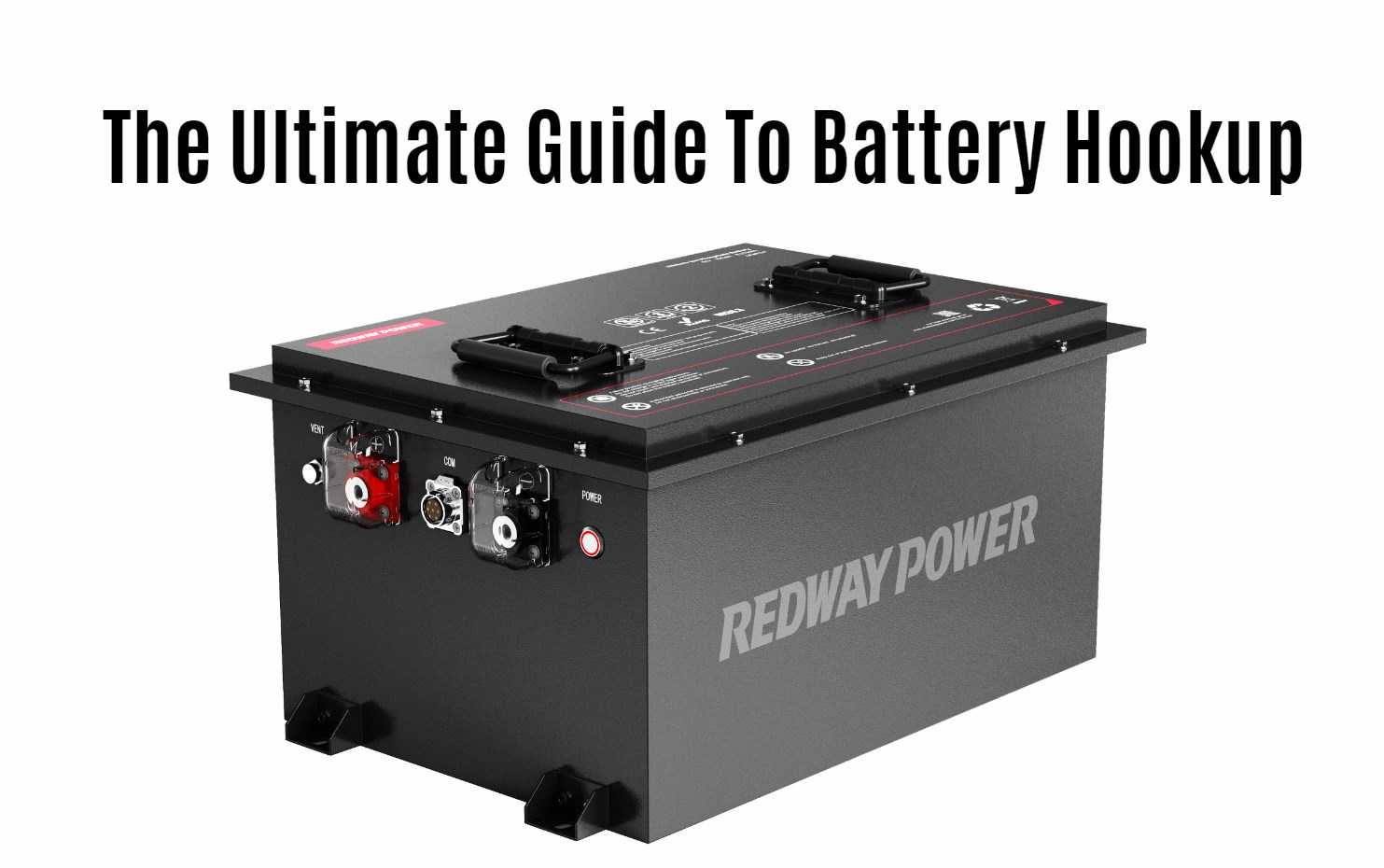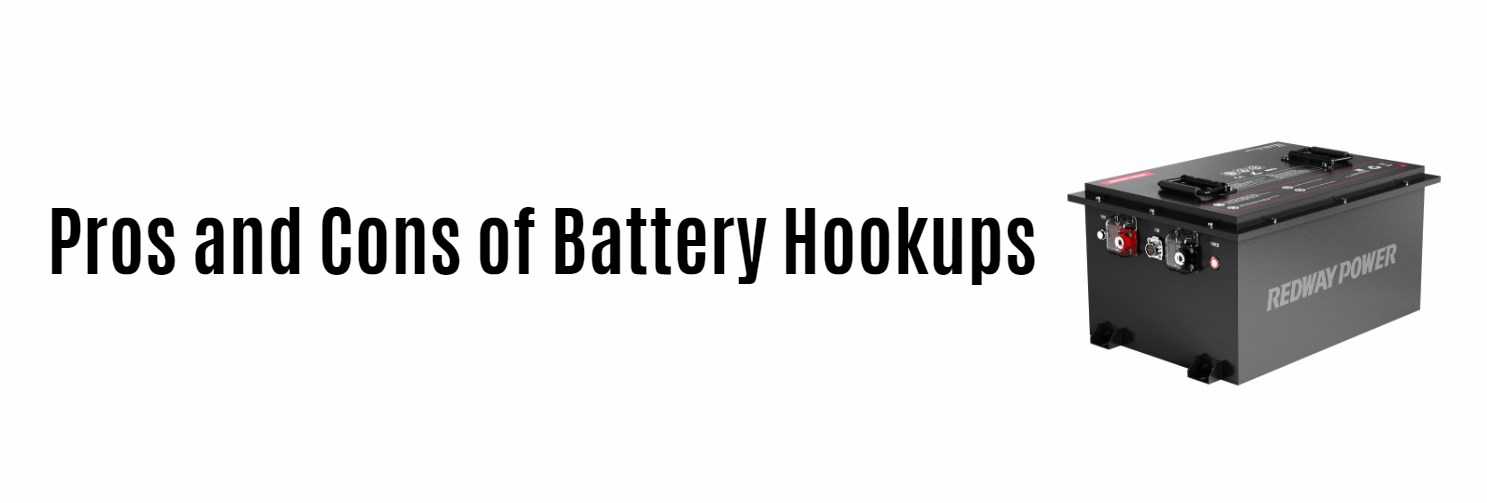- Importance of Battery Hookup: Proper battery hookup is crucial for maximizing battery performance and longevity. It ensures that batteries are connected in the correct manner, optimizing their efficiency and preventing damage.
- Methods of Battery Hookup: The ultimate guide covers various methods of battery hookup, including series and parallel connections. It explains the distinctions between these connections and provides step-by-step instructions for wiring batteries.
- Considerations and Charger Tips: The guide highlights important considerations to keep in mind when hooking up batteries, such as matching battery capacities and ensuring proper polarity. Additionally, it offers valuable tips for charging batteries to maintain their health and optimize their performance.
What is a Battery Hookup?
- Definition of Battery Hookup: A battery hookup refers to the process of connecting batteries in a circuit or system to work collectively and generate electrical power. It involves connecting the positive and negative terminals of the batteries in the correct configuration, such as series or parallel connections.
- Importance of Correct Configuration: Proper configuration in battery hookup is crucial for optimizing power output and ensuring balanced charging and discharging among the batteries. Series connections increase voltage, while parallel connections increase capacity, allowing users to meet specific power requirements.
- Applications of Battery Hookup: Battery hookup finds applications in various scenarios, such as creating battery banks for renewable energy systems, off-grid power solutions, electric vehicles, and portable power setups. It enables users to combine multiple batteries to meet higher power demands and extend runtime.
Types of Battery Hookups
Explore the types of battery hookups, including top post, side post, and universal terminals. Top post terminals are commonly found in traditional automotive batteries, while side post terminals are space-saving and provide a secure connection, often used in newer vehicles. Universal terminals offer versatility and compatibility with various battery types. Discover the different types of battery hookups and choose the one that suits your specific application.
Standard Battery Hookup
The standard battery hookup involves connecting the positive terminal of the battery to the positive terminal of the load and the negative terminal to the ground. This is the most straightforward and commonly used method for basic applications.
Reverse Polarity Hookup
In a reverse polarity hookup, the positive terminal of the battery is connected to the negative terminal of the load. This setup is used in specific situations requiring a reversed current flow, which can be necessary for certain types of equipment.
Series Hookup
Connecting batteries in series involves linking the positive terminal of one battery to the negative terminal of the next. This configuration increases the total voltage while maintaining the same capacity. It’s ideal for applications requiring higher voltage, such as inverters and large power tools.
Parallel Hookup
In a parallel hookup, all positive terminals are connected together, and all negative terminals are connected together. This setup increases the overall capacity while keeping the voltage the same. It is perfect for applications needing extended run time, such as backup power systems.
Combination Hookup
A combination of series and parallel hookups can be used to achieve the desired voltage and capacity. This hybrid setup is often seen in complex power systems where both high voltage and high capacity are required.
Pros and Cons of Battery Hookups
Advantages
- Reliability: Battery hookups provide a dependable power source, especially in remote or mobile applications.
- Flexibility: Both permanent and temporary setups are possible, catering to diverse needs.
- Scalability: Easily scalable by adding more batteries to meet higher power demands.
Disadvantages
- Maintenance: Regular maintenance is required to ensure connections remain clean and tight.
- Safety Risks: Incorrect setups can lead to overheating, fires, or even explosions.
- Cost: Initial setup costs can be high, particularly for complex configurations involving multiple batteries and sophisticated equipment.
Essential Equipment for Battery Hookup
Jumper Cables
Jumper cables are crucial for temporarily connecting batteries to each other or to a power source for jump-starting purposes.
Voltmeter
A voltmeter measures the voltage across battery terminals, ensuring the system operates within safe limits.
Socket Wrench Set
A socket wrench set is necessary for securely fastening battery terminals and connections, ensuring stability and safety.
Battery Management System (BMS)
A BMS monitors and manages the performance of the battery, protecting against overcharging, over-discharging, and overheating.
How to Set Up a Battery Hookup
- Attach the Positive Terminal First: When setting up a battery hookup, it is important to start by attaching the positive terminal of the battery. This terminal is usually marked with a “+” symbol and is typically connected to the red cable.
- Connect the Negative Terminal: After attaching the positive terminal, proceed to connect the negative terminal. This terminal is usually marked with a “-” symbol and is typically connected to the black cable.
- Securely Tighten the Fasteners: Slide the terminals onto the battery posts and use a wrench or socket set to securely tighten the fasteners. This ensures a snug and reliable connection, preventing any loose connections that may affect the performance of the battery hookup.
Alternatives to Traditional Battery Hookups
- Exploring Different Sellers for Used Batteries: If you’re looking for cost-effective options, consider exploring different sellers for used batteries. These sellers often offer high-quality batteries at reasonable prices, making them a great alternative for various applications.
- Alternative Energy Sources: Consider alternative energy sources like salt or seawater for your power needs. These sources offer sustainable and environmentally friendly options, providing a viable alternative to traditional battery hookups.
- Rechargeable Batteries: Rechargeable batteries are a popular alternative to traditional battery hookups. They can be used multiple times, reducing waste and providing a cost-effective solution. Rechargeable batteries are available in various sizes and capacities to suit different devices and applications.
Conclusion
Setting up a battery hookup correctly is crucial for ensuring a reliable and safe power supply for your electronic devices. By following the detailed guidelines provided in this guide, you can achieve a successful and efficient battery hookup, tailored to your specific needs. Always prioritize safety and regular maintenance to prolong the life and performance of your battery system.
For more advanced setups or specific applications, consider consulting with a professional to optimize your battery hookup configuration.





